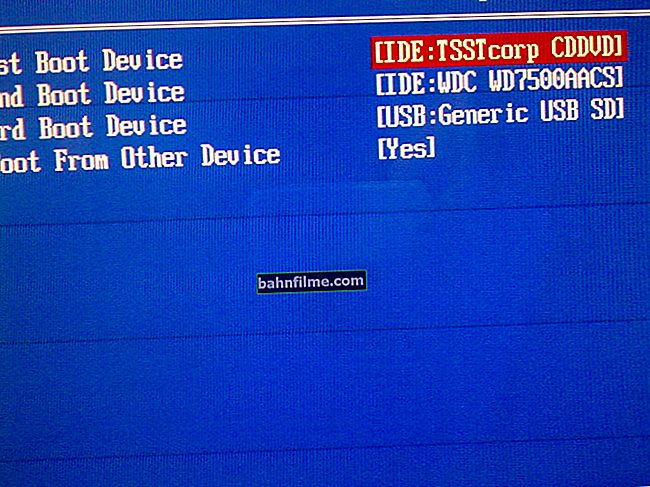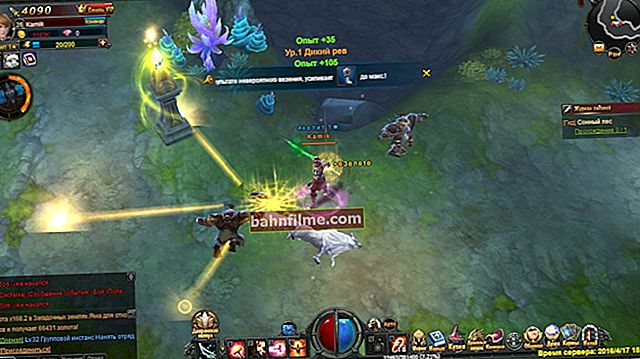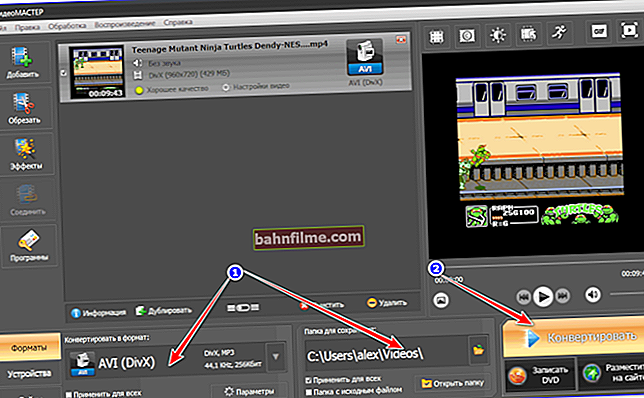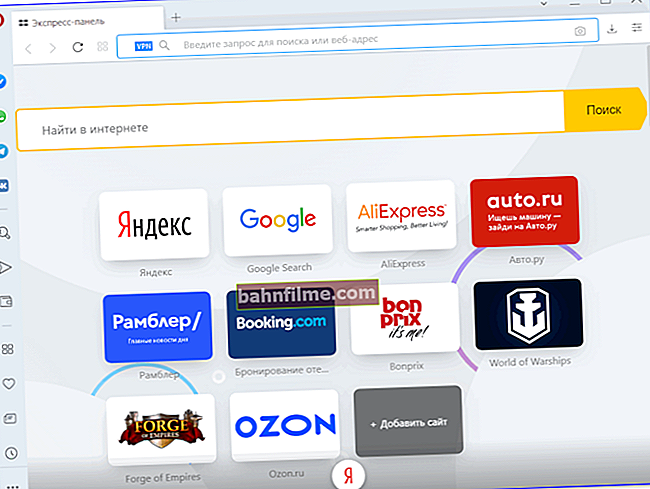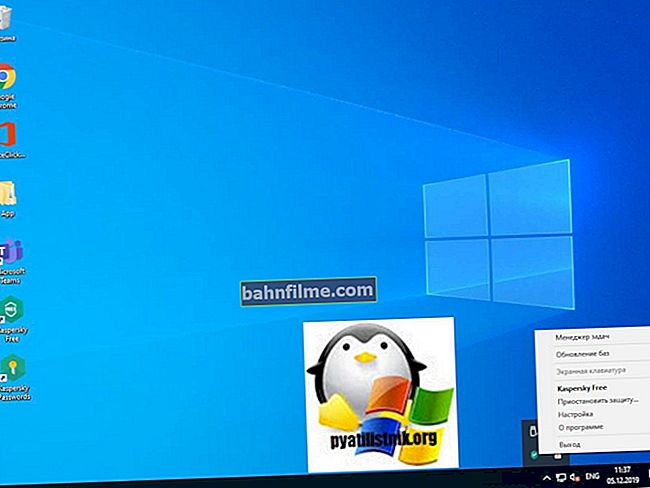
User question
Hello.
Help me find out the real speed of the Wi-Fi network. Only I'm not interested in the speed of the Internet, but the speed from the router to the laptop via Wi-Fi (so to speak, local speed).
There is a suspicion that the provider, when connecting, "slipped" his router to me, which cuts the local speed (I just changed the Internet tariff several times - and the speed was always the same).
Hello.
Yes, it also happens that a Wi-Fi router "cuts" the speed, and even if you choose a higher-speed Internet tariff, then working with Wi-Fi you may not notice the difference at all ...
Actually, in this article I will show you step by step how you can easily and quickly find out the real (in numbers) speed of a Wi-Fi network. I think the information can be useful to many novice users ...
For readers who do not quite understand what this is about. See the screenshot below: let's say you have an Internet tariff of 100 Mbps and the router is connected with a cable to an Internet provider. But you work on a laptop that connects via Wi-Fi to a router.

About bottleneck
So, if real the speed between the router and the laptop via Wi-Fi is not more than 50 Mbps - then you simply overpay, i.e. the laptop simply cannot get an Internet access speed of up to 100 Mbps because of this "bottleneck" (the maximum that it will get is 50 Mbps).
Remark!

How to find out the speed of the Internet (not to be confused with the local speed of Wi-Fi), see this note: //ocomp.info/kak-uznat-skorost-interneta.html
*
Wi-Fi speed test
Checking the speed through the connection status (theoretical speed)
Windows is a fairly "smart" system, and when connected to any network (including Wi-Fi), it automatically "detects" its speed (however, it is impossible to rely entirely on these values, but nevertheless ...) ... We can say that this is a "theoretical speed", and in practice this value is not always maintained.
To view the connection status, you must first open the list of all network connections ... For this:
- press the keyboard shortcut Win + R;
- enter commandncpa.cpl to the "Open" line and click OK.

How to open ncpa.cpl network connections
Next, right-click on the wireless network, and in the menu that appears, select "Network status" ... See example below.

Wi-Fi network status
A window will open, which will indicate your speed in Mbps (not to be confused with MB / s (or MB / s)) ... In general, if we discard some theory, then it is enough to divide this figure (in my example 300 Mbit / s) by 8 to get the speed in MB / s (i.e. the speed shown by programs like uTorrent) .
Remark! Difference between Mbps and Mbps - //ocomp.info/skolko-megabit-v-megabayte.html

Theoretical speed 300 Mbps
Important! The speed of 300 Mbps shown in the screenshot above is the speed between a Wi-Fi router and a laptop, i.e. local (this is not internet speed!). It's just that many people confuse this seemingly simple moment ...
However, I want to note that when you are dealing with a Wi-Fi network, the declared Windows speed of 300 Mbit / s (say) is not kept up (the real one is usually less than 2-3 times)! But nevertheless, it was worth recognizing her, tk. in some cases, having learned even this figure, the reason for the slow Internet becomes clear ...
Where to start ... Setting up a computer connected with a cable to the router
The most objective way to find out the real speed of a Wi-Fi network is to connect a computer / another laptop to the router via a network (Ethernet) cable, and try to upload (or download from it) a file from a laptop that works over Wi -Fi with router. A bit confusing, but the diagram below, I think, will dot the "and".

Copy (download) the file from the laptop to the PC - find out the speed
Remark!
You can connect a second laptop via Wi-Fi rather than a network cable, and also transfer a file from one device to another. Only in this case the obtained speed will not be very objective: since with each new connected device via Wi-Fi - the overall network speed will drop.
After connecting the computer with a network cable to the router - a characteristic icon should light up in your tray -  .
.

The network has appeared, everything is OK
Next, open the explorer (combination of Win + E buttons) and go to the "Network" tab. Most likely, you will get an error (as in the example below) that you cannot view network resources, because Disabled network discovery (this is how Windows is configured by default). Anyone who has no error can skip the next couple of steps.

Network Discovery Disabled
Turn on viewing of shared folders
To enable network discovery, you need to open the Windows Control Panel at:
- Control Panel \ Network and Internet \ Network and Sharing Center

Network Sharing Center (Windows 10)
Next, expand the "Guest or Public" profile and move the sliders to:
- enable network discovery;
- enable sharing of printers and folders.

Guest Profile
Then open the "All networks" profile and move the sliders to the mode:
- enable sharing so that network users can read and write files to shared folders;
- disable password protected sharing.

All Networks Profile (Advanced Sharing Settings)
After the changes have been made, if you open "Network" in the explorer, a small window should appear with a proposal to enable network discovery - agree (an example is presented below).

Turn on detection
We share (do common access) to one of the folders
Now you need to make a shared folder (share) so that any local network user (who is connected to your Wi-Fi router) can upload (or download from) file (s) to it (or download from it).
To do this, create a folder on the disk and open it properties ... Further in the tab "Access" click on the button "General access" ... See screenshot below.

Create a folder, go to its properties, and click on the shared access
Next, you need to select and add a group "Everything" (i.e. all users) and give them permission to "read and write" ... See example below.

Add permission for ALL - read and write
Please note that in the properties of the folder you will see its network path. It should now be writable and readable.

Network path
Setting up a laptop connected via Wi-Fi to the router. Test and get real speed
Now we turn to the laptop, which is connected via Wi-Fi. It also needs to enable network discovery (similarly to how we did it just above) .
Then launch "Explorer" (combination Win + E) and open the tab "Net" ... The name of the second PC / laptop (which is connected via a network cable to the router) should appear in it. We open it (see the screen below).

Updating the network tab
Important!
If you do not see the second PC / laptop, then check if they have the same workgroup (to do this, press the key combination Win + Pause on both devices - computer properties will open, as in the screenshot below). If the workgroup is different, change it on one of the PCs so that it is the same on both devices!
Well, of course, computer name a must have for every device uniquely !

Computer name and workgroup (clickable)
Further among the available resources should be the folder that was shared. We open it (in my example, this is "new folder") .

Opening the shared folder
Now find on your laptop some "large" file (at least 500-1000 MB), and copy it to this folder.

Local folder
During copying, a few seconds after the start, the speed should "level off". Actually, we got the real data transfer rate over the Wi-Fi network (in practice, on real data).
Why a large file? The fact is that if you take a lot of small files, then the speed will "jump", tk.The PC will have to spend considerable time indexing (working with files. System). In general, you will not get the result as such.
In my example, the speed was approximately 9.4-9.6 MB / s.

Average speed about 9.5 MB / s
For a more objective result, wait until the copying is complete, and then try downloading the file from this folder. Get real average speed.
In addition, in this way you will appreciate the stability of the Wi-Fi network: some inexpensive routers can simply break the "connection" during operation (ie if your download is interrupted and the router restarts - most likely it simply cannot withstand the load. In this case, try to limit the maximum speed of Wi-Fi in the router settings).
PS
If you have a low speed of reading from a hard disk, and at the same time you are connected to a high-speed Wi-Fi network, it may happen that your transmission speed over the network will be limited by the speed of reading / writing information on the HDD.
To help! How to find out the read / write speed of the hard disk - //ocomp.info/kak-proverit-skorost-diska-ssd-hdd.html

HDD test results: see the line "Seq Q32T1" (ie read speed from HDD ~ 100 Mb / s).
PS 2
By the way, in order not to "manually" copy files to a shared folder to check the speed of the local network, you can use the special. utility LAN Speed Test (for example). Allows you to quickly estimate the real speed of the LAN.
*
That, in fact, is all. Additions on the topic are welcome ...
All fast network and low ping!

